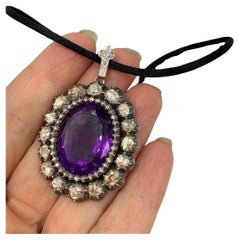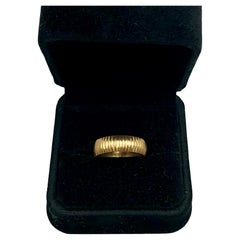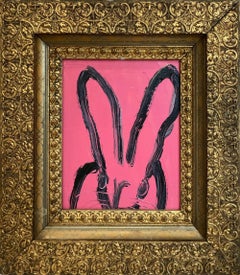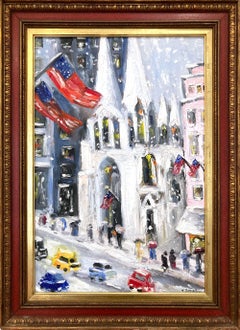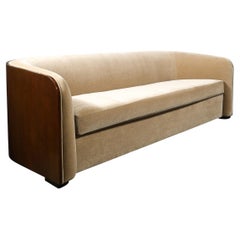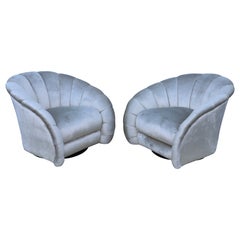Manhattan
Early 19th Century Georgian Antique Manhattan
Amethyst, Diamond, 14k Gold
20th Century Manhattan
18k Gold, Yellow Gold
2010s Neo-Expressionist Manhattan
Oil, Wood Panel
2010s American Impressionist Manhattan
Oil, Board
1980s American Mid-Century Modern Vintage Manhattan
Mohair, Walnut
1980s American Mid-Century Modern Vintage Manhattan
Velvet
1990s Pop Art Manhattan
Postcard
2010s Neo-Expressionist Manhattan
Oil, Wood Panel
1910s American Impressionist Manhattan
Oil, Canvas
1960s Italian Mid-Century Modern Vintage Manhattan
Brass
21st Century and Contemporary Italian Modern Manhattan
Gold, Brass
2010s Neo-Expressionist Manhattan
Oil, Wood Panel
2010s Neo-Expressionist Manhattan
Oil, Wood Panel
2010s Neo-Expressionist Manhattan
Oil, Wood Panel
1950s Contemporary Manhattan
Photographic Film, Archival Ink, Archival Paper, Digital, Archival Pigme...
2010s Contemporary Manhattan
Archival Pigment
21st Century and Contemporary Italian Modern Manhattan
Murano Glass
1960s Italian Vintage Manhattan
Glass
Mid-20th Century French Art Nouveau Manhattan
Glass
2010s Neo-Expressionist Manhattan
Oil, Wood Panel
1930s Belgian Art Deco Vintage Manhattan
Marble, Bronze
20th Century Realist Manhattan
Canvas, Oil
1940s American Modern Manhattan
Woodcut
21st Century and Contemporary American Manhattan
Diamond, Emerald, Pyrite, 14k Gold
Early 20th Century Art Deco Manhattan
Mirror, Bakelite, Wood
19th Century English Georgian Antique Manhattan
Carnelian, 15k Gold, Yellow Gold
2010s Neo-Expressionist Manhattan
Glass, Oil, Canvas
19th Century American American Classical Antique Manhattan
Sterling Silver
21st Century and Contemporary American Manhattan
Lapis Lazuli, Tourmaline, 14k Gold
2010s Thai Art Deco Manhattan
Diamond, Citrine, Gold, Yellow Gold, 18k Gold
1950s French Mid-Century Modern Vintage Manhattan
Ceramic, Paint
Early 20th Century Art Deco Manhattan
Copper, Iron
21st Century and Contemporary French Art Deco Manhattan
Brass
Mid-20th Century Persian Kashan Manhattan
Wool
20th Century Manhattan
18k Gold, Yellow Gold
20th Century Organic Modern Manhattan
Mother-of-Pearl
1930s French Art Deco Vintage Manhattan
Bronze
21st Century and Contemporary Philippine Art Deco Manhattan
Brass
16th Century Belgian Renaissance Antique Manhattan
Tapestry, Wool, Silk
Early 2000s Pop Art Manhattan
Lithograph, Offset
1920s Italian Vintage Manhattan
Mirror
20th Century Edwardian Manhattan
Diamond, Opal, Ruby, 14k Gold, Yellow Gold
21st Century and Contemporary Philippine Art Deco Manhattan
Quartz, Brass
20th Century Post-Impressionist Manhattan
Canvas, Oil
Late 19th Century Turkish Outsider Art Antique Manhattan
Wool, Angora
20th Century Italian Modern Manhattan
Onyx, Gold, 18k Gold, Yellow Gold
Early 20th Century Tibetan Expressionist Manhattan
Wool
20th Century American Modernist Manhattan
14k Gold, Yellow Gold
Early 20th Century Italian Modern Manhattan
Brass
1960s Vintage Manhattan
White Diamond, Diamond, Platinum
2010s American Contemporary Manhattan
Diamond, Yellow Diamond, Black Diamond, Brown Diamond, Gold, 18k Gold, R...
1960s Italian Vintage Manhattan
Metal
Mid-20th Century Mexican Manhattan
Metal
21st Century and Contemporary American Art Deco Manhattan
Zircon, Silver, Sterling Silver
Late 19th Century Chinese Antique Manhattan
Ceramic, Porcelain
1960s American Mid-Century Modern Vintage Manhattan
Bronze, Enamel, Pewter, Gold Leaf
1970s Pop Art Manhattan
Postcard
2010s Neo-Expressionist Manhattan
Glass, Resin, Oil, Wood Panel
21st Century and Contemporary American Art Deco Manhattan
Topaz, Blue Topaz, Silver, Sterling Silver
21st Century and Contemporary American Modern Manhattan
Sapphire, Blue Sapphire, Silver, Sterling Silver
